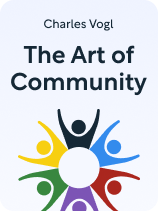

This article is an excerpt from the Shortform book guide to "The Art of Community" by Charles Vogl. Shortform has the world's best summaries and analyses of books you should be reading.
Like this article? Sign up for a free trial here.
Do you have an item that’s sentimental to you? How do emblems and mementos create a sense of belonging?
In The Art of Community, Charles Vogl explains that communities can use emblems to foster a sense of belonging. Emblems are metaphoric representations of a community’s moral code, such as the US flag’s symbolism of the country’s history and values.
Read more for a better understanding of why emblems are powerful to communities.
Fostering Belonging With Emblems and Mementos
Vogl explains that emblems create a sense of belonging because when you see them, you’re effortlessly reminded of what your community stands for and its significance to people’s lives.
(Shortform note: Because emblems are so powerful, members of a community who are unhappy with the community’s functioning may make emblems the focal point of their disillusionment. For example, to protest anti-Black injustice in the United States, the football player Colin Kaepernick began kneeling before the American flag (instead of standing with his hand over his heart, as is tradition) during pre-game performances of the national anthem. According to experts, heightened emotional response to such protests against community emblems, which are often perceived as disrespectful, demonstrate how important these emblems are—as Vogl explains, they function as a metaphor for the community itself.)
According to Vogl, mementos are the most powerful form of emblems. Mementos are items bestowed upon members to keep. He explains that when one member of the community gives another member a memento, they’re signifying that the recipient is a valid and appreciated part of the community. When you’re the recipient, the memento serves as a reminder that you’re accepted and cared for. There’s no limit to what kind of item can be given as a memento as long as its meaning is clear—for example, a community of divers might give seashells to new members to mark their acceptance within the group, a group of recovering alcoholics might give members chips to mark their progress, and an online community might give out digital badges.
(Shortform note: Psychologists note that mementos hold sentimental power because they represent the achievements that are important to your self-worth. Such achievements tend to be intangible and fleeting—for example, the moment you’re finally accepted by your community can’t be wrapped up in a gift box. Thus, the memento serves as proof that it happened—something you can revisit time and time again, even though the moment of actual achievement has passed. Because of mementos’ sentimental value, people often struggle when they lose or need to get rid of them—so when you’re choosing an item to give as a memento, it’s important to choose something that won’t deteriorate or devalue over time.)
Vogl recommends imbuing mementos with meaning by following three steps: First, tell the recipient why they’re receiving this memento (for example, to celebrate a success). Then, tell the recipient what the memento means (for example, a seashell might represent the beauty of the ocean to a group of divers). Finally, tell the recipient the memento’s purpose (for example, reminding them that they belong).
(Shortform note: Vogl suggests that you imbue mementos with meaning by verbalizing the memento’s purpose and why you’re giving it to the other person. Experts say that spoken words tend to be more emotionally impactful than written words. However, if you’re in an online community where it’s more convenient to use text or if you’re simply more comfortable writing a message to your recipient than saying it aloud, you might consider sharing this information inside a note or card attached to the memento. While speaking is usually more emotionally impactful, writing down what you want to say gives you more time to perfect your message—if you choose your words carefully, you might make more of an impact this way.)

———End of Preview———
Like what you just read? Read the rest of the world's best book summary and analysis of Charles Vogl's "The Art of Community" at Shortform.
Here's what you'll find in our full The Art of Community summary:
- The fundamental guidelines all communities should follow
- How to institute a community meeting place and set of customs
- How you can enhance belonging within your community






